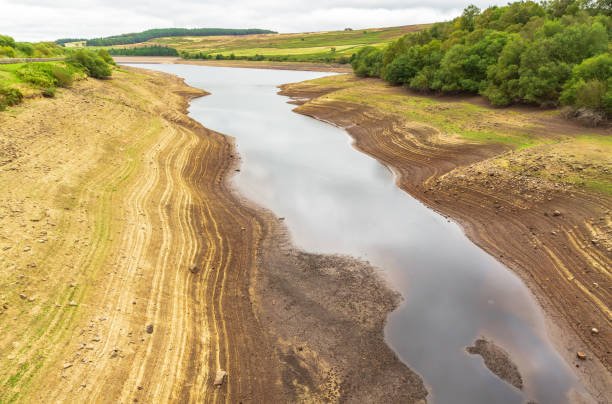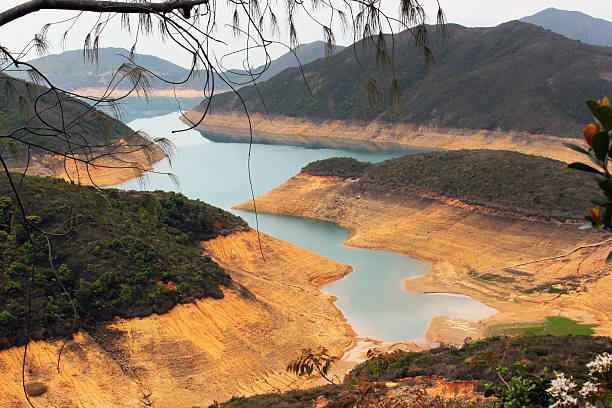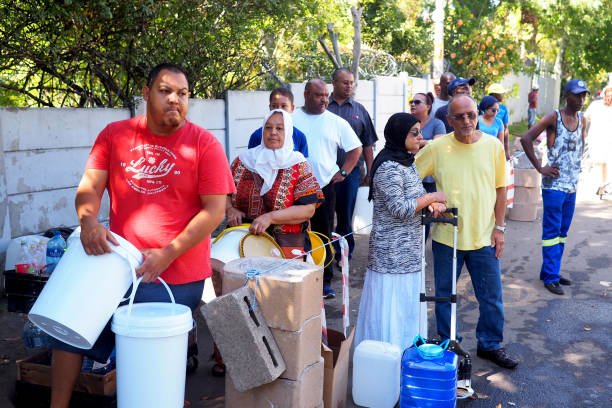Pictures of the Different Types, Causes and Examples of Droughts Drought Happen Seasonal which is beyond of Dry Period this may Occur due to the lack of Rainfall which may cased by Different factor Natural and man made reasons.
What is a drought?
Unlike other natural hazards like earthquakes and flooding, it is quite difficult to define a drought. This is because it is typically a slow onset event and the effects accumulate over time. As a result, it is very hard for us to assess when it begins and ends.
Nonetheless, we basically define drought as a period of drier than normal conditions. It usually occurs due to a lack of rainfall or other water-related factors like snowmelt. Or it can be due to high temperatures and low humidity levels. It also occurs over large areas and can range from a few months to several years.
Pictures of the Different Types of Droughts
Droughts can generally be divided into four main types:
Meteorological Drought:

This type of drought refers to a period with below-average precipitation. Meteorological drought is usually the initial drought to occur and can be specific to certain regions as the amount of “normal” precipitation can vary between different areas. For instance, a few weeks without rain might be considered a drought in a tropical rainforest, but the same wouldn’t be true in a desert.
Agricultural Drought:

This type of drought happens when there’s not enough moisture for average crop or range production. This could be due to a lack of rainfall or conditions that cause rapid evaporation of water, such as high temperatures and winds. Agricultural droughts are of significant concern to farmers and can lead to a decrease in food production and increased prices.
Hydrological Drought:

This type of drought is related to the effects of periods of precipitation shortages on water supply. This could be seen in lower levels in reservoirs, lakes, and rivers, as well as decreased groundwater levels. Hydrological droughts are often seen after many months of meteorological drought.
Socioeconomic Drought:

This type of drought associates the supply and demand of economic goods with elements of meteorological, agricultural, and hydrological drought. It happens when the demand for an economic good exceeds supply as a result of a weather-related shortfall in water supply.
Causes of droughts
Droughts occur mostly due to natural reasons but human activities can also initiate them.
Natural causes
1. Changes in the water cycle
The water cycle refers to the continuous movement of water from the surface of the Earth to the atmosphere. Water typically evaporates as water vapor and condenses to form clouds. Winds blow clouds to particular regions where they eventually fall back to Earth as rain or snow.
Sometimes, blocks of air can halter the movement of winds in the atmosphere thus changing local weather conditions. Winds carrying clouds can thus change directions resulting in droughts in particular regions.
2. Increase in temperature
When temperature increases, more water evaporates from the land and oceans. So, if the temperature is cool in a region, very little moisture is carried to other places. Consequently, it can lead to drought in those places.
Climatic patterns can cause droughts
Sometimes, anomalies in temperature can affect air circulation as well. As a result, rainfall patterns change. Climatic patterns like El Nino and La Nina are such examples.
Both El Nino and La Nina affect countries found around the equator like southeast Asia, eastern and southern Africa. El Nino events typically increase the temperature of the sea thus leading to droughts. As these nations rely heavily on agriculture, a single drought event has severe consequences on food production.
3. Changes in climatic conditions
Climate refers to long-term weather conditions. As it is, climatic conditions change over time, from year to year or decade to decade. We call this the natural climate variability. It can be due to changes in the sun’s energy, volcanic eruptions, changes in the Earth’s orbit, etc. So, when these changes occur, they can result in natural hazards like tornadoes and droughts.
Human causes
1. Deforestation
In regions like the tropics, local water cycles create rainfall. Forests lose water through evapotranspiration. This water then condenses to form clouds. As these clouds become too heavy, water falls back to Earth as rain.
But when we cut down trees, there is less evapotranspiration. Consequently, less clouds form and less rain falls. As an example, scientists link droughts in southern Brazil to deforestation in the Amazon Basin.
2. Soil degradation
Soil degradation is when the quality of the soil changes due to poor or improper management. Most commonly, it is because of agricultural practices, urban and industrial uses. Basically, when soil degrades, it loses its fertility, structure, composition, and its pH changes.
Land-use changes
Generally, land-use changes such as deforestation and construction heavily impact soil quality. Intensive agricultural practices and the heavy use of chemicals also do so. As the quality of the soil deteriorates, it cannot hold water anymore. The quality changes such that rainfall can easily carry it away and it erodes more rapidly. In the long run, it can lead to desertification and droughts in some places.
3. Increased water demand
Since the start of the 20th century, human activities have had a serious impact on the risk of droughts globally. This is mainly because the water demand increased
- for growing food,
- to produce energy,
- because of outdated water management techniques and
- intensive irrigation.
For example, as we consume more water today, we also require more water reservoirs. But sometimes when we construct dams across rivers and streams, we divert the natural flow of water. Consequently, the land downstream dries up leading to droughts. Dry river is in fact one of the factors heavily causing hydrological droughts.
Examples of Socioeconomic Drought in Cape Town
Socioeconomic drought occurs when the demand for water exceeds the available supply during a period of adverse weather conditions. This type of drought has direct impacts on the production and availability of goods and services in society. Here’s an example from South Africa:
The Cape Town Water Crisis (2015-2018) in South Africa is an example of a socioeconomic drought. Cape Town, one of the most populated cities in South Africa, faced a severe water shortage due to three consecutive years of drought, which is considered to be a once-in-300-years event.
The city’s reservoirs fell to critical levels, leading to strict water rationing measures. At the height of the crisis, each city resident was limited to 50 liters of water per day (for comparison, the average American uses about 330 liters per day). This water was to be used for drinking, cooking, washing, and all other daily needs.
The impact of this drought extended beyond just the availability of water for consumption. Agriculture was severely affected, which led to a significant loss of jobs in a region where employment is largely tied to farming. The tourism industry, a major economic driver in Cape Town, was also impacted as potential tourists were deterred by the water crisis.
This crisis highlighted the importance of sustainable water management strategies and the need to prepare for potential future droughts due to climate change. Cape Town has since made significant changes to its water management policies, including increasing the price of water, investing in new water sources such as desalination and recycling, and implementing public education campaigns about water conservation.
Remember, these types of droughts are interconnected. Meteorological drought can lead to agricultural and hydrological droughts, and all three can contribute to socioeconomic drought. Furthermore, the impacts of drought can be exacerbated by human activities such as excessive water usage, poor land management, and climate change.